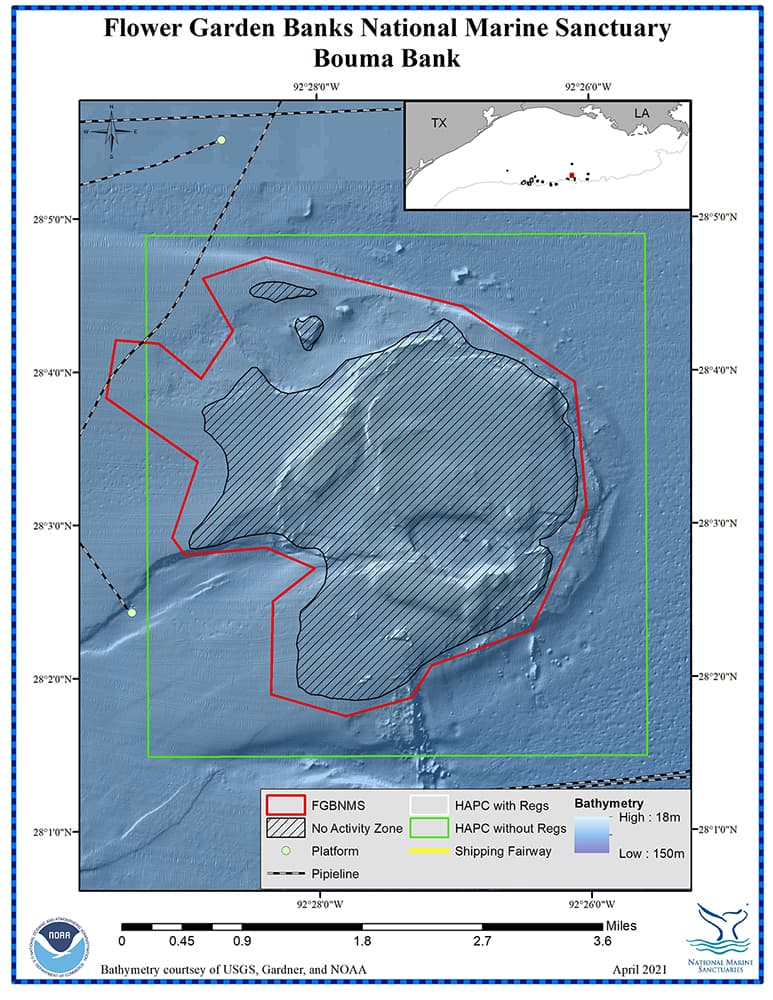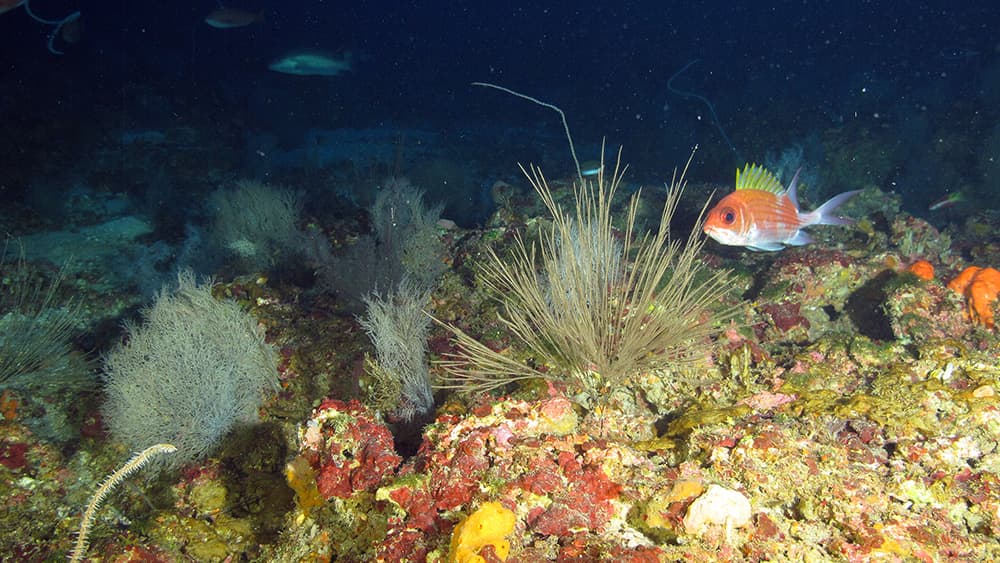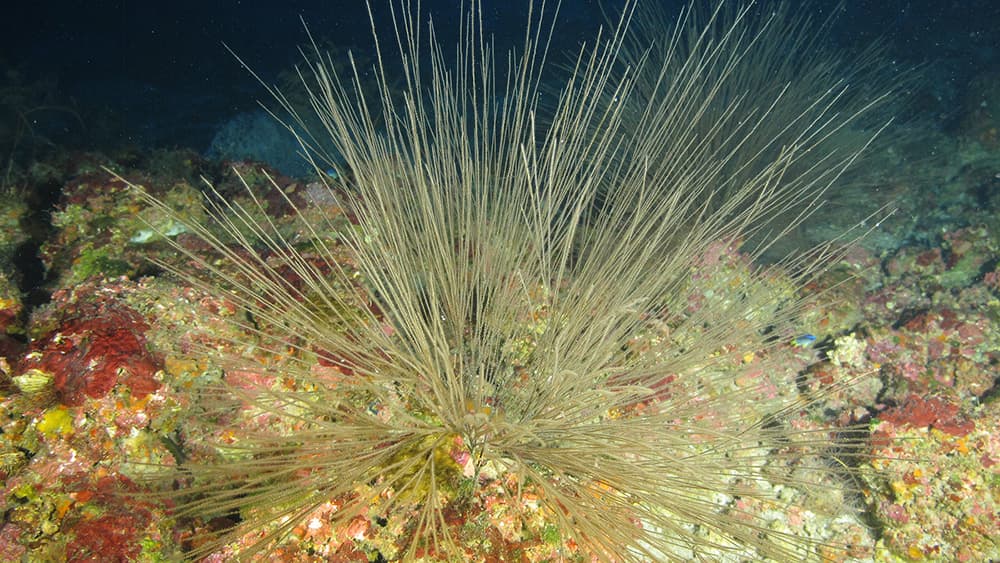Bouma Bank

Bouma Bank
Bouma Depth Range: 187-322 feet (57-98 meters)
Bouma Distance from Land: 102 miles (164 km)
Bouma Area: 7.7 square miles (19.9 sq km)
Bouma Bank is on the northern side of a feature that includes Rezak and Sidner Banks. It was named for Arnold H. Bouma, a Louisiana State University geologist, and is designated as a Habitat Area of Particular Concern (HAPC).



Who Was Arnold Bouma?
Arnold H. Bouma (1932-2011) was a marine geologist/sedimentologist who emigrated to the United States from the Netherlands in 1966, to join the Texas A&M University Department of Geological Oceanography. His main area of study was the flow of sediments called turbidity currents, or turbidites, along the continental slope. His work identifying the layered deposits formed by these sediment flows came to be known as the Bouma Sequence, often described as "a geological milestone of the 20th century."
Bouma went on to work for the U.S. Geological Survey, the oil and gas industry, and Louisiana State University before returning to Texas A&M. He applied his research to oil and gas exploration, as well as environmental issues like coastal protection and dredging.

